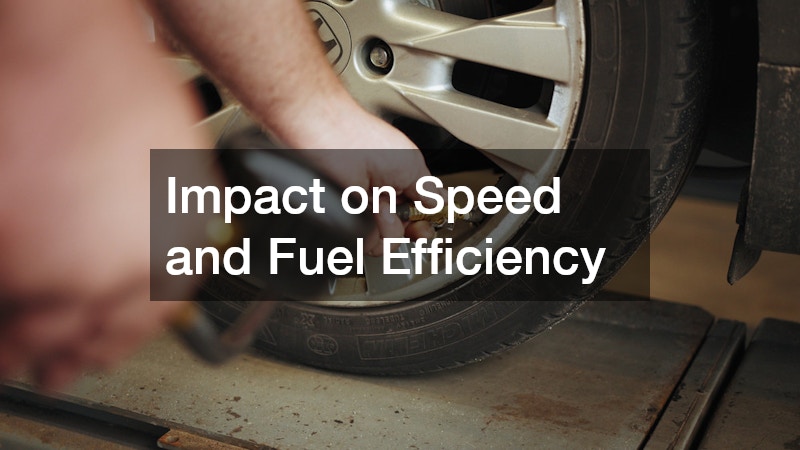The quest for a superior driving experience often leads car enthusiasts to consider every component of their vehicle, including tires. High-performance tires promise enhanced grip, speed, and precision, but do they truly make a difference? In this article, we will explore this question by examining the most common inquiries drivers have about these specialized tires.
What Are High-Performance Tires?
Definition and Characteristics
High-performance tires are engineered specifically for drivers seeking enhanced vehicle handling and superior cornering capabilities. Their unique construction features advanced tread patterns and specialized rubber compounds that differentiate them from conventional tires.
These attributes are designed to provide maximum grip and stability, crucial for performance-sensitive driving.
These tires are often optimized for a focus on speed and agility, offering an elevated driving experience for those who appreciate precision. With a design tailored for enhanced traction, high-performance tires are the preferred choice for sports cars and enthusiasts who push their vehicles to the limits. Despite similarities in appearance, their internal construction showcases deeper differences aimed at achieving top-tier performance.
Advantages and Disadvantages
The advantages of high-performance tires are evident in their improved traction in both dry and wet conditions, contributing to a more secure driving experience. These tires are also crafted to withstand higher temperature ranges, facilitating superior performance in circumstances requiring rapid acceleration or sudden braking. However, these benefits often come at the cost of reduced comfort, as the tires may transmit more roadway imperfections to the cabin.
One of the drawbacks includes a shorter tread life compared to regular tires, as the softer rubber compounds used in high-performance designs tend to wear down more quickly. Drivers using these tires may find themselves replacing them more frequently, which can add up in expenses over time. Additionally, due to their specialized nature, high-performance tires might not be ideal for harsh winter conditions without the aid of supplementary winter or all-season tires.
Another consideration is noise, as high-performance tires can sometimes produce more road noise due to their tread design and construction. This can affect overall cabin quietness, which might not be ideal for all drivers. Evaluating the trade-offs between enhanced performance and these potential disadvantages is crucial for making an informed decision about tire selection.
Are High-Performance Tires Worth the Investment?
Cost vs. Benefit Analysis
When considering an investment in high-performance tires, it is essential to weigh their cost against their benefits. Typically more expensive than standard tires, high-performance models offer substantial enhancements that can make them a worthwhile expense for certain drivers. These tires often result in better handling and cornering, contributing to a more exhilarating and rewarding driving experience.
Drivers should also consider the potential long-term savings in vehicle performance and safety when opting for high-performance tires. Although the initial purchase may be higher, the enhanced control and safety can prevent accidents, potentially reducing repair costs. Additionally, the extended capabilities in specific driving conditions may provide benefits that outweigh the upfront investment.
Usage and Driving Conditions
Different driving environments heavily influence the efficacy and value of high-performance tires. In urban settings, the added expense may not justify the benefits, as driving typically involves lower speeds and regular stops. However, on highways or track settings, the increased grip and handling precision of high-performance tires can substantially enhance the driving experience.
High-performance tires shine particularly in conditions where superior traction and responsive handling are critical. On winding roads or during high-speed cornering, these tires provide the necessary grip and stability to maintain control and ensure safety. Conversely, in normal, routine driving conditions, the advantages of high-performance tires might be less evident, potentially making a case for more versatile tire options.
How Do High-Performance Tires Improve Driving Experience?
Handling and Stability
High-performance tires are crucial for enhancing a vehicle’s handling and stability, offering drivers improved control over their cars. These tires feature wider, flatter tread profiles, which provide a larger contact area with the road, increasing grip. This design is particularly beneficial during cornering at higher speeds, where stability and precision in maneuverability are most needed.
Furthermore, their robust sidewall construction enhances the communication between the tires and the driver through the steering wheel. This allows for quicker response times and enhances the driver’s confidence in performing precise driving actions. For enthusiasts and professional drivers, this responsiveness can translate into faster lap times and a deeper connection with their vehicle.
Impact on Speed and Fuel Efficiency
High-performance tires can positively affect a vehicle’s speed capabilities by providing a stable and secure foundation for acceleration. Their advanced tread patterns and materials are optimized for higher speeds, allowing drivers to safely explore the upper limits of their vehicles. However, their impact on fuel efficiency may vary, as the increased traction can lead to higher rolling resistance.
In certain cases, the improved grip and handling capabilities can result in better fuel economy by allowing smoother transitions and less energy wastage when steering or accelerating. Nonetheless, the specific tire design and driving style will largely influence whether efficiency is increased or decreased. Evaluating these factors is important for those looking to maximize both performance and economy.
High-performance tires offer significant benefits in terms of handling, stability, and speed capabilities, making them a valuable investment for certain driving conditions and environments. While they may come with higher costs and some potential drawbacks, the enhanced driving experience they provide can justify the expense for many drivers. Ultimately, the decision to invest in high-performance tires should be based on personal driving preferences, conditions, and the balance between performance desires and practical needs.


